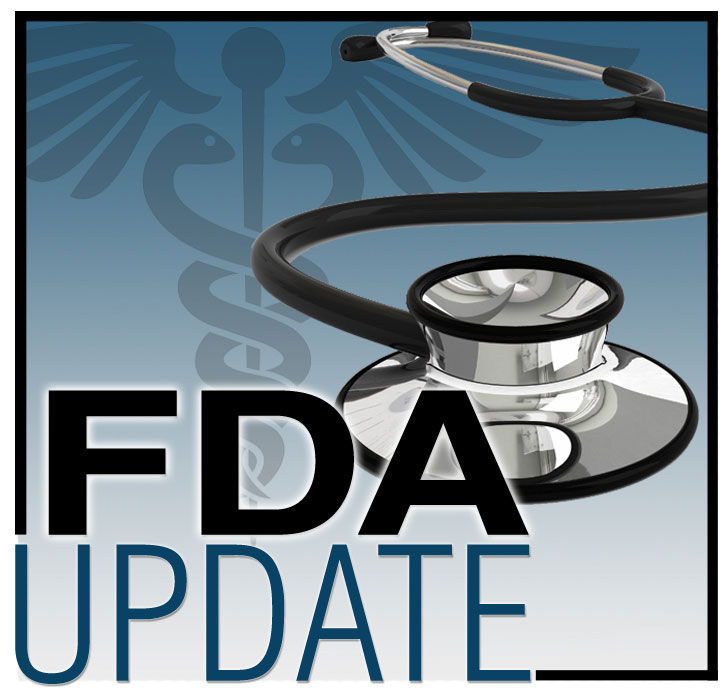On March 31, 2021, the U.S. Food and Drug Administration (FDA) issued a safety communication informing patients, caregivers, and healthcare providers that certain acellular dermal matrix (ADM) products used in implant-based breast reconstruction may have a higher chance for complications or problems.

Patients and surgeons have several choices for breast reconstruction following mastectomy. If a patient chooses implants, they are placed either alone or with ADM. However, FDA has not cleared or approved ADM or mesh for use in breast reconstruction, and its recent analysis contains information that patients and providers must understand when selecting reconstruction options.
Recommendations for Patients and Caregivers
- Before surgery, discuss with your doctor the risks and benefits of implant-based breast reconstruction with or without ADM. If ADM is used, discuss the type with your provider.
- Although ADM is used for other types of reconstruction, FDA has not cleared or approved ADM for use in breast reconstruction.
- If you have had breast reconstruction with ADM and experienced a problem, file a report through MedWatch, FDA’s safety information and adverse event reporting program.
Recommendations for Healthcare Providers
- Discuss the potential benefits and risks of all relevant treatment options with your patients as part of a shared decision-making process.
- FDA has not approved or cleared any ADM products for use in implant-based breast reconstruction. Data and published literature suggest that some ADMs may have higher risk profiles than others.
- FDA does not recommend reoperation or removal of implanted ADM as a preventive measure.
- Report any patient adverse events to the FDA MedWatch program.
Device Description
ADM is a type of surgical mesh developed from human skin (e.g., FlexHD®, AlloMax™, AlloDerm™) or animal skin (such as SurgiMend®), in which the cells are removed but the support structure is left in place. ADMs vary significantly in their source, processing, level of sterility, biomechanical properties, thickness, final product state, and preparation methods prior to clinical application. FDA cleared some ADMs for use in certain types of surgeries (e.g., hernia) to reinforce weak tissue.
ADM in Implant-Based Breast Reconstruction
Use of ADM is increasing and is now commonly used off label in implant-based breast reconstruction. However, FDA has not cleared or approved any ADM product for use in breast reconstruction.
FDA’s Analysis of Current Data
FDA analyzed patient-level data from real-world use of ADMs for implant-based breast reconstruction and found that two ADMs—FlexHD and Allomax—may have a higher risk profile than others. The Mastectomy Reconstruction Outcomes Consortium (MROC) is a prospective, cohort study collecting data from 11 centers, including nine academic hospitals, in the United States and Canada with high volumes of breast reconstruction. The study evaluated outcomes in patients undergoing implant-based breast reconstruction after mastectomy using data on major complications including reoperation, explantation (implant removal), and infections.
FDA analyzed the study’s data set, comparing the complication rates between the control group which did not receive ADM and groups receiving one of the four ADM brands (FlexHD, AlloMax, SurgiMend and AlloDerm). It found significantly higher major complication rates of explantation, reoperation, and infections two years after surgery in patients with FlexHD and AlloMax brands when compared to patients who received SurgiMend or AlloDerm brands or no ADM. Additional study findings suggest differences in safety profiles among different brands of ADM, consistent with FDA’s analysis. Additional clinical data are needed to better assess ADM’s benefits and risks.
Real-world data suggest that some ADMs may have higher risk profiles than others, but FDA does not recommend preventive reoperation or removal of implanted ADM. In addition, the FDA is not aware of any information that shows an association between ADM use and development of breast implant–associated anaplastic large cell lymphoma. Prompt reporting of adverse events can help the FDA better understand the risks.
FDA Activities
In March 2019, FDA held an advisory committee meeting on breast implants, at which time the panel recognized the data about ADM for breast reconstruction and FDA’s indetermination on its safety and effectiveness in breast reconstruction. The panel recommended to inform patients and conduct studies to assess the benefit and risk of ADM use in breast reconstruction.
FDA is actively working with experts in the clinical and scientific communities and other external stakeholders, including the manufacturers, to evaluate all available information about ADMs and will keep the public informed if significant new information becomes available. The FDA will hold a public meeting of the General and Plastic Surgery Devices Panel of our Medical Devices Advisory Committee in the coming months to discuss the currently available scientific information on ADM for breast reconstruction.
Report Adverse Events
Prompt reporting of adverse events can help FDA to identify and better understand the risks associated with medical devices. If you experience a problem with your device, report the problem through the MedWatch voluntary reporting form. Note device identifiers, including brand name, model number, and manufacturer, and describe the problem in detain.
Healthcare professionals employed by facilities that are subject to FDA's user facility reporting requirements should follow their facility’s reporting procedures. Hospitals are required to report some adverse events related to medical devices. Federal regulations require user facilities to report a suspected medical device–related death to both FDA and the manufacturer. User facilities must also report a medical device–related serious injury to the manufacturer or FDA.





